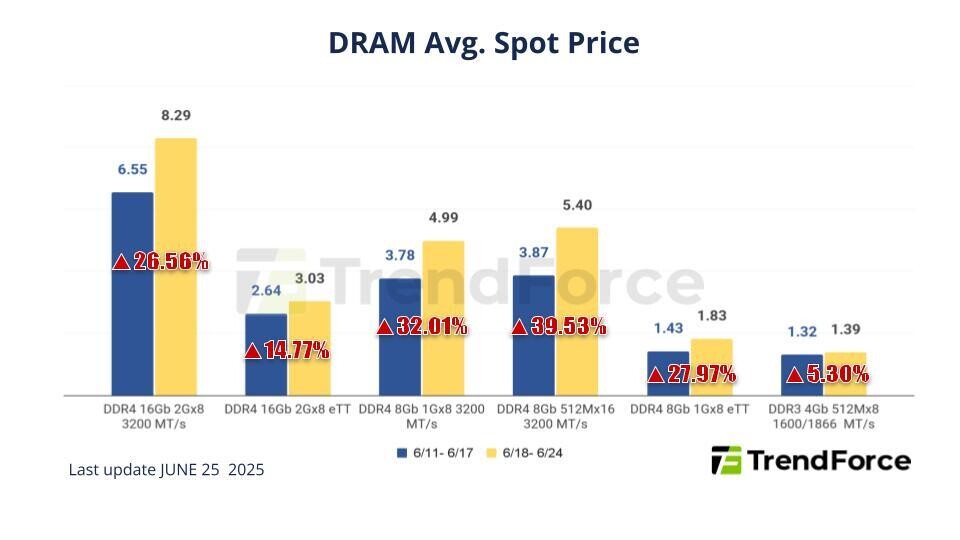When it comes to the introduction of new technology, prices are typically higher than the previous generation. However, the situation is different with DRAM. For the first time since DDR5 was launched, buyers are now paying more for DDR4 memory modules than for the newer standard. This unexpected shift is driven by a combination of tariff uncertainty and the rapid depletion of DDR4 inventories. According to TrendForce data, prices for some high-demand DDR4 kits have increased by up to 40% in just one week. Additionally, DRAMeXchange reports that the average spot price for a 16 Gb (1Gx16) DDR4 module at 3,200 MT/s from Samsung and SK Hynix has climbed to $12.50, with peak offers reaching $24. In contrast, dual-8 Gb DDR5 kits running between 4,800 MT/s and 5,600 MT/s are still priced at an average of $6, rarely exceeding $9.
This sudden surge in DDR4 prices follows Micron's announcement that it will cease DDR4 production by the end of the year, speeding up the depletion of existing stocks over the next six to nine months. Samsung has also revealed plans to retire its DDR4 lines and focus on DDR5 and high-bandwidth memory. Meanwhile, China's CXMT has confirmed that it will reduce its DDR4 output despite recently reaching peak production levels. Taiwan's Nanya Technology stands to benefit greatly from this market shift. In the first quarter, the company had a DDR4 inventory valued at approximately NT$37.6 billion ($1.2 billion). Nanya has even stopped publicly quoting prices to manage sales at these elevated levels.
Many in the tech industry are concerned that renewed trade tensions between the US and China could lead to another wave of panic buying. If additional tariffs target China's remaining DDR4 supply, module costs could rise to more than three times the price of DDR5, prolonging this unusual pricing inversion well into the next quarter.

